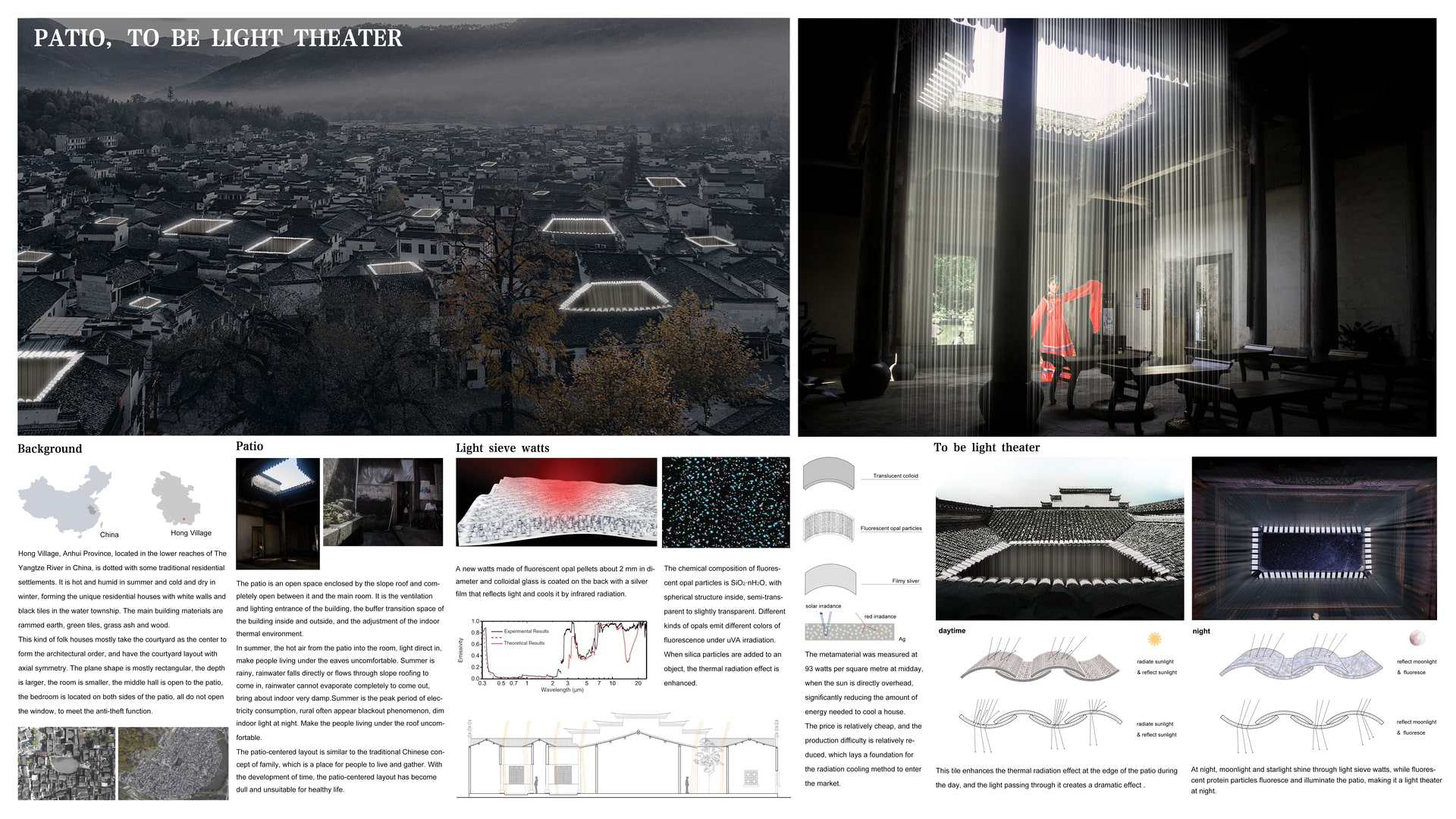Project Description
Hong Village, Anhui Province, located in the lower reaches of The Yangtze River in China, is dotted with some traditional residential settlements. It is hot and humid in summer and cold and dry in winter, forming the unique residential houses with white walls and black tiles in the water township. The main building materials are rammed earth, green tiles, grass ash and wood. This kind of folk houses mostly take the courtyard as the center to form the architectural order, and have the courtyard layout with axial symmetry. The plane shape is mostly rectangular, the depth is larger, the room is smaller, the middle hall is open to the patio, the bedroom is located on both sides of the patio, all do not open the window, to meet the anti-theft function. The patio is an open space enclosed by the slope roof and completely open between it and the main room. It is the ventilation and lighting entrance of the building, the buffer transition space of the building inside and outside, and the adjustment of the indoor thermal environment. In summer, the hot air from the patio into the room, light direct in, make people living under the eaves uncomfortable. Summer is rainy, rainwater falls directly or flows through slope roofing to come in, rainwater cannot evaporate completely to come out, bring about indoor very damp.Summer is the peak period of electricity consumption, rural often appear blackout phenomenon, dim indoor light at night. Make the people living under the roof uncomfortable. The patio-centered layout is similar to the traditional Chinese concept of family, which is a place for people to live and gather. With the development of time, the patio-centered layout has become dull and unsuitable for healthy life. A new tile made of fluorescent opal pellets about 2 mm in diameter and colloidal glass is coated on the back with a silver film that reflects light and cools it by infrared radiation. The chemical composition of fluorescent opal particles is SiO2·nH2O, with spherical structure inside, semi-transparent to slightly transparent. Different kinds of opals emit different colors of fluorescence under uVA irradiation. When silica particles are added to an object, the thermal radiation effect is enhanced. The metamaterial was measured at 93 watts per square metre at midday, when the sun is directly overhead, significantly reducing the amount of energy needed to cool a house. This tile enhances the thermal radiation effect at the edge of the patio during the day, and the light passing through it creates a dramatic effect .At night, moonlight and starlight shine through light sieve watts, while fluorescent protein particles fluoresce and illuminate the patio, making it a light theater at night. The price is relatively cheap, and the production difficulty is relatively reduced, which lays a foundation for the radiation cooling method to enter the market.
